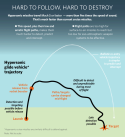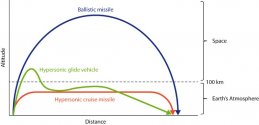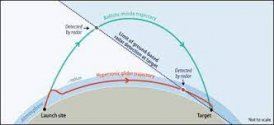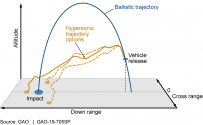I count 171 sailors on that flight deck. Is that the total number of sailors that can crew this ship?
You are using an out of date browser. It may not display this or other websites correctly.
You should upgrade or use an alternative browser.
You should upgrade or use an alternative browser.
055 DDG Large Destroyer Thread
- Thread starter FarkTypeSoldier
- Start date
- Status
- Not open for further replies.
I count 171 sailors on that flight deck. Is that the total number of sailors that can crew this ship?
What do you mean?
Are you asking if 171 sailors is the full complement of the ship? Almost certainly not.
Nope, as a Matter of fact, SAMs are the fastest and most maneuverable missiles ,the only problem is that they tend to have a smaller warhead but with that speed it can do some serious damage, it’s like the second stage of a 3M-54/YJ-18 ,and the 48N6 family has a 180KG warhead so......Nobody is going to be using SAMs as anti-ship weapons. Don't confuse America's failure to develop a modern anti-ship weapon and its subsequent efforts to paper over the cracks with a real trend. The "anti-ship" capability of a SAM is like the "anti-air" capability of a 5" gun. It might be effective in certain circumstances, but nobody is going to rely on it to the exclusion of systems that are better optimised for the task.
Nobody is going to be using SAMs as anti-ship weapons. Don't confuse America's failure to develop a modern anti-ship weapon and its subsequent efforts to paper over the cracks with a real trend. The "anti-ship" capability of a SAM is like the "anti-air" capability of a 5" gun.
A very tall claim and contradicting the general trend towards dual capable missiles. The reality is that missiles like ESSM or SM-6 can not only prove much harder targets for intercept, they would also almost certainly mission kill their target with a hit and leave it highly vulnerable to follow on attacks finishing them off. This is not nearly the same IMO as eg OTO Melara 76 mm anti air roles etc.
SAMs have fragmentation warheads which are good against unarmored targets with thin aluminum/composite skin. These explode before the target and cause case fragments, typically of aluminum, to spread everywhere.If your SAM is large enough, flies far enough and does enough oomph- it only makes sense to do it this way.
Certainly for destroyers and above, which can carry many dozens of such missiles.
They won't be able to penetrate warships with thickened steel armored bulkheads and multiple redundant components. Aluminum is softer than steel so fragments won't penetrate and may just shatter, the pieces that do penetrate might make only small holes that don't do anything, and the explosive warhead is usually tiny (100 kg or so).
Antiship missiles usually have 200-1000 kg warheads with armor piercing capabilities.
SAMs are also aerodynamically optimized for thin air operations, not sea skimming where ground effect matters.
Why would it be impossible to shoot it down? There are plenty of SAMs that can target ballistic missiles in the terminal phase. Even SRBM can attain speeds up to Mach 9.5.
Its not the speed.
Its the where.
Hypersonics travel at the edge of the atmosphere, the edge of space. Its a very dangerous zone if you remember how capsules reentry and satellites burn up. Ballistic missiles travel a parabolic path, they go up into space, then down to Earth. They spend minimal time in this burn zone. Missiles intended to intercept ballistic missiles do not spend a lot of time in this zone. A hypersonic on the other hand, spends much of its flight time in this zone. It is specially made with all the exotic materials to prevent it from burning up. In doing so, a hypersonic does not travel a parabolic path to space, and by flying only at the edge of space, it uses the Earth's curvature to hide itself before it rises from the horizon.
For a SAM to intercept the hypersonic, it has to spend as much time in the atmosphere and at very high speeds. It will burn up without being made of the same materials to prevent it from burning up. Polycarbonate radome on the radar seeker? That will burn up. You need to make the nose with some kind of material that is extremely heat resistant.
Then you also have other problems. Plasma or ionized gas forms around the hypersonic and this interferes radar. Its like an active form of stealth and ECM at the same time. Of course that also interferes with the hypersonic's own radar so I wonder how the hypersonic will guide.
Using IR seekers on the SAM is a no no. If the missile travels fast enough, the glass around the seeker will melt. The shape of IR seekers are not also super streamlined for these speeds and are draggy.
Lastly but not the least, the hypersonic travels in an oscillating movement. It regularly pitches up and the FBW has to pitch it down. Remember this is skating at the outer edge of the atmosphere. This is not unusual with lifting bodies as lift pitches the nose up. The diagrams of various Chinese HGV presentations that have been posted here in the past also show this movement. This S shaped movement, going up then down then up, makes it evasive, even if it is unintentional.
I think your idea of what a HGV is capable is quite different from the mainstream. Hypersonic gliders fly roughly level trajectories until they approach their target. Then they execute a steep dive onto target.
View attachment 75434
Their gliding altitude is a function of their speed: the higher the speed, the higher the altitude. Because they depend on drag to stay aloft, their speed rapidly decreases, and so does their altitude. That drag dramatically heats up the glider, and lights them up like a Christmas tree, making them an easy target for IR satellites in orbit. Continuous updates on their position and speed are nearly assured, except until the very end when their speeds drops so much that their IR signature becomes too faint. But by that time they will be well within radar range.
For almost all of its flight, the speed of the glider is significantly less than that of a ballistic missile.
View attachment 75433
Because of their relatively slow speed in the end game, HGV may be vulnerable to endoatmospheric interceptors like the naval SM-6 Dual II or the terrestrial THAAD. I would wager that these would need just a processing/software upgrade to deal with SRBM/MRBM range gliders, if they already don't have the capability. Even the early AEGIS from the 80s had the capability to take out Kitchens diving from 27km at Mach 4.6.
In fact, a MaRV may be more challenging in the end game due to its vastly superior speed and maneuverability.
I don't think so.
Attachments
I think your idea of what a HGV is capable is quite different from the mainstream. Hypersonic gliders fly roughly level trajectories until they approach their target. Then they execute a steep dive onto target.
View attachment 75434
Their gliding altitude is a function of their speed: the higher the speed, the higher the altitude. Because they depend on drag to stay aloft, their speed rapidly decreases, and so does their altitude. That drag dramatically heats up the glider, and lights them up like a Christmas tree, making them an easy target for IR satellites in orbit. Continuous updates on their position and speed are nearly assured, except until the very end when their speeds drops so much that their IR signature becomes too faint. But by that time they will be well within radar range.
That first chart doesn't show HGV trajectory that well. It's a good indicator of the Qian Xuesen trajectory. HGVs can surely change altitude and use lateral movements to some degree. The other main advantage is being much harder to detect and track for radar if not impossible. Thermal sensing satellites can't guide interceptors even if thermal sensing satellites have any meaningful ability to detect and track HGVs which is certainly not a sure thing. Yes China has long had the ability to use satellites to track aircraft and ships but using them for guiding HGV interceptions is surely not possible unless we're talking giving some mid course guidance until missile itself can use seekers whatever may be effective.
For almost all of its flight, the speed of the glider is significantly less than that of a ballistic missile.
View attachment 75433
Because of their relatively slow speed in the end game, HGV may be vulnerable to endoatmospheric interceptors like the naval SM-6 Dual II or the terrestrial THAAD. I would wager that these would need just a processing/software upgrade to deal with SRBM/MRBM range gliders, if they already don't have the capability. Even the early AEGIS from the 80s had the capability to take out Kitchens diving from 27km at Mach 4.6.
In fact, a MaRV may be more challenging in the end game due to its vastly superior speed and maneuverability.
I suspect the improvement would be software related as well. Because the missile would need to hunt the HGV in a different way compared to a ballistic target.
However we don't know how an HGV turns to comment more on this except to say the trajectory is indeed very different to ballistic missiles. Intercepting Kitchens is very different to intercepting HGVs. MaRV difficulty may or may not be greater since we don't know the actual turning capabilities of HGVs and the various ones used by China and Russia. I would suspect that MaRVs do not turn as much as HGVs. Perhaps that poses a remarkably greater difficulty for interception.
SAMs have fragmentation warheads which are good against unarmored targets with thin aluminum/composite skin. These explode before the target and cause case fragments, typically of aluminum, to spread everywhere.
They won't be able to penetrate warships with thickened steel armored bulkheads and multiple redundant components. Aluminum is softer than steel so fragments won't penetrate and may just shatter, the pieces that do penetrate might make only small holes that don't do anything, and the explosive warhead is usually tiny (100 kg or so).
Antiship missiles usually have 200-1000 kg warheads with armor piercing capabilities.
SAMs are also aerodynamically optimized for thin air operations, not sea skimming where ground effect matters.
SAMs do have the option against surface targets --- case of SM-2 used against an Iranian boat. But that's usually the case of last ditch option.
You can choose not to include that on the ordering options list, to save money, like the British did on the Sea Ceptor.
Its not something you should choose for long range as the missile will fly high, not sea skim, and all it does is to broadcast your own location to your opponent, once your missile is spotted and the trajectory traced back to your location.
Missile intercepting other missiles is overrated anyway. What's underrated is soft kill measures, as you can potentially stop anything with them.
Like those mysterious huge arrays beneath the bridge wing of the Type 055, which are definitely not radar, and are located where ECM usually are in most ships. I would assume that to be the next generation EW/ECM of the PLAN, and you can see the exact same panels on the 003, exactly relative to the same locations of EW is located on the sides of the Liaoning's and Shandong's islands.
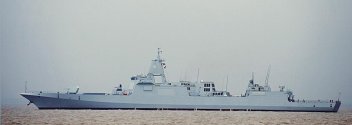
- Status
- Not open for further replies.

